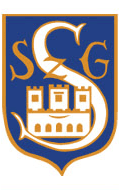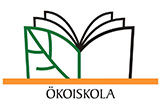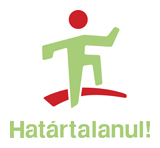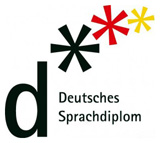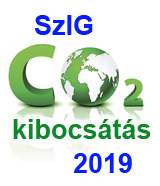- Hírek
- Rólunk
- Oktatás
- Beiskolázás
- Dokumentumtár
- Tudnivalók a mindennapos testnevelés két órájának kiváltásáról
- Iskolaorvosi javaslat a testnevelés besoroláshoz
- Tájékoztatás a hivatalos kikérő alapján való távolmaradás engedélyezésével kapcsolatos szabályokról
- Igazgató úrhoz benyújtandó kérvények formanyomtatványa
- A 2022-2023. tanév éves terve
- Házirend
- SzMSz
- Pedagógiai program
- Tanulmányok alatti vizsgák rendje
- Vizsgázói észrevétel a kétszintű írásbeli vizsgadolgozat javításával kapcsolatban
- Panaszkezelési Szabályzat
- Önértékelési Szabályzat
- Gyakornoki szabályzat
- Intézkedési terv
- Közzétételi lista
- Belföldi és külföldi versenyek és kirándulások engedélyezéséhez szükséges nyomtatványok
- A magyar gyermekvédelmi rendszer működése az online környezetben történő veszélyeztetés tükrében
- Az iskola-egészségügyi tevékenységre vonatkozó tájékoztatás
- A Diákönkormányzat dokumentumai
- A 2022–2023-as tanév ökoiskolai munkaterve
- Múzeum
- Regisztrált felhasználók
Főoldal › Múzeum › Iskolatörténet › English
The chronological sketch from the institute’s history
October 1, 1850- The opening of the first school year in the Catholic sub-secondary school.
October 1, 1857- The new part of the sub-secondary school building in Templom Street was inaugurated.
1868- The Catholic and the Lutheran sub-secondary school of the same level, which had already functioned since 1853, were united into a sub-secondary school of no denomination with three classes in the town centre. From the beginning of the next school year it functioned as a main secondary school with 4, 5 and 6 classes.
1872- The school building became too small. For this reason, it was completed with a new wing facing Liszt Ferenc Street.
January 1, 1876- The school was nationalized. The reshuffling of the school into an eight-form secondary school started and the compulsory matriculation was introduced.
1914-17- During the time of World War I the school’s basement and the first floor were used as a military hospital.
August 1921- In virtue of the Treaty of Trianon Sopron was allocated to Austria. For this reason, most of the equipment of the school was transferred to Győr, but education in the institute was not interrupted.
January 1922- The city voted to remain part of Hungary according to the referendum of December 14, 1921. All the school equipment was therefore moved back.
1922- Pursuant to the educational minister’s regulation, Széchenyi István’s name was taken up from the school year of 1922/1923.
1930- The school was reorganised into a secondary school specializing in sciences.
1935- The school became a secondary grammar school.
November 1937- The ceiling of the second floor in the 80-year-old building came off. From January until the end of the school year teaching was carried out in different schools in the town. The renovation works significantly changed the arrangement of the inner classrooms.
September 1942-August 1945- Owing to WWII, the school functioned as a military hospital. Teaching started in September, 1945.
1948- The eight-form secondary school was reduced to a four-form one.
1964- The school ceased to function as an all-boy school.
1966-81- In the school a four-year postal training took place as well.
1990- The school was transformed into a four and six -form secondary school.
September 2006-October 2007-The complete restoration of the school building was finished, and the attic area was built in.
November 2007- There is teaching again in the old but renovated school building.
A historical sketch of the transformations of our school
The period of the sub-secondary school for sciences and languages (18 years) : 1850-1868
On October 1 1857, which in those times was the official beginning of the academic year, the part of the present building facing Templom Street was inaugurated.
At that time our school was already 7 years old ; on October 1 1850 in order to gratify the demand of the city traders and craftsmen of the town, a catholic sub-secondary school for sciences and languages was established. It functioned at 44 Várkerület and intended to teach science subjects in the framework of a 2-year course.
Was it necessary for the school to have such a huge building like the one in Templom Street? Certainly not. The two-grade formation was not popular since the students who intended to learn something practical were well satisfied with finishing their elementary education , whereas those having chosen academic studies would rather attend the secondary school type. As a result, both the secondary school for sciences and languages and the catholic primary school moved to the same building at 26 Templom Street and worked for 35 years together. The aim was to extend secondary education with further classes and turn it into a six-form main secondary school formation.
The main-secondary school for sciences and languages (62 years) : 1868-1930
The non-denominational sub-secondary school with three classes was finally established on October 1, 1868. After this, the school was expanded by 3 new classes each year. In the first school year 157 students were enrolled. The next year the institute had already 207 learners, out of whom 100 were first-grade students. Although class 4 had just been introduced, they already changed the school’s name to main- secondary school for sciences and languages. Due to the rapid development in the academic year 1871/72 the main- secondary school system became complete with class 6. In that year in 1872 the school building also had to be extended. The wing in Liszt Ferenc Street was built as an additional part, yet it was not a ’side-wing’ at all but formed the longer part of the final L -shaped school building. Because of this addition the ’school-house’ turned into a ’school palace’.
Secondary education of sciences and languages- similarly to the current professional education- was a very costly formation. The proper tools, the experimental materials and the laboratory equipment implied a considerable financial burden for the maintainer of the school. This was a problem the school had already had to face since 1968. Therefore, from 1873 they wanted to nationalize the institute alluding to the financial issues. Eventually, with the help of the minister of religion and education Trefort Ágoston (who was Sopron’s MP back then) the ministry notified the town’s aldermen that the school would belong to the Hungarian State from January 1 1876. In his ordinance he made the eight-form education obligatory. He also made it mandatory that in the school year of 1875/76 students in year 7 and from the following years on students in year 8 should take a final examination. Consequently, in 1875 the 7th grade, in 1876 the 8th grade was introduced. So the first final exams took place in the year of the school’s nationalization. Six years later a new law came into force, according to which only grammar-schools and secondary schools for sciences and languages were considered secondary schools. Both types had eight forms, but while grammar-schools entitled everybody to get into all universities or colleges, the final exam at a secondary school for sciences and languages only gave an entitlement to technical universities, universities with Maths and Science faculties, and to mining, forestry and economic academies. At the same time, students in secondary schools for sciences and languages were able to make their final exam equal by taking a complementary exam of Latin or Greek language.
To sum up, the eight-form educational formation made the introduction of the final exam possible, and in doing so , the application for a higher education. In addition, the complementary exam in the antique languages would make the selection of universities and colleges wider. Last but not least, it made the school even more appealing in Sopron too.
The six decades of the school’s functioning was a uniquely glorious period in the institute’s past. The school boasted Frigyes Rösch ,who taught here (in ten fields of specialization!) from the foundation of the school until his retirement , and who was the founder of the first Hungarian Gymnastics and Fire-fighting Association as well as the builder of the first sports hall in Sopron and in Hungary. Chemistry as a subject became a priority and its high-quality teaching was supported by the chemistry practices adapted by Dr. Wallner Ignác since 1872. In the chemistry laboratory not only the demands of the curriculum were fulfilled, but some tasks similar to the current ones of KÖJÁL(Health Department) and ÁNTSZ(State Health Inspecting Service) were also carried out for the city. The students' high chemical knowledge gained here was acknowledged by foreign polytechnics as well.
Only one year after the patenting of Bell's phone, Leó Salamin, a physics teacher arranged the first long-distance telephone call in Hungary between Pinnye and Sopron in 1877.
Teaching visual art in the school in the late 19th and the first half of 20th century far exceeded the level of art education at similar schools of that age. Ernő Ágoston (1889-1957), for instance, who later became a nationally ranked painter and graphic artist, received artistic training from Károly Hauser and Kálmán Seemann. Károly (Kálmán) Perényi Peischl (1896 – 1985) painter also graduated from here in 1915. Between the two world wars, a whole generation of painters and drawing-teachers grew up under the hands of the artist József Horváth, holder of the Munkácsy Mihály Award , who along with his colleague Henrik Janesitz, made the school’s drawing education renowned nationwide. The list of their pupils includes Munkácsy Mihály Award winner Ernő Kunt painter and Ernő Szakál sculptor, as well as János Reinecker, Emil Richly, Vilmos Roisz, Ferenc Sebestyén, László Varga, Ferenc Schey, Ernő Ákos and Árpád Szarka - the two latter took over the role of teaching drawing at the school.
Lajos Bella , who started teaching History and Geography at the school in 1876, gained fame both in Hungary and abroad by means of his excavations. He began his most significant archaeological project in 1887 at Várhely around Sopron, where the remains of a Celtic fort from the Iron Age were unearthed. In addition to this, in the millennium era dr. Gyula Viszota, as a member of the teaching staff started his research into the life and work of count István Széchenyi and later he became one of the most significant researchers in this field in our cultural history.
Secondary grammar school education from 1935
From September 1935, according to a new educational law, secondary education became unified all over the country. The secondary school system with its 8 grades got a special role. Elementary and secondary schools for sciences and languages could only exist until their existing years would run out. This step meant the end of the formation that had existed for 85 years and also the loss of the school’s former profile. In 1935, therefore, when Széchenyi school was altered to function as a grammar school, with its great past it became just one of the secondary grammar schools in town. In the beginning, in the rivalry of the town’s high schools, Széchenyi definitely started out with a considerable drawback against the Benedictine Secondary School and the Evangelical Lyceum and catching up seemed impossible at first. However, the school’s past made it obvious that the school needed to start rivalling with other schools . For seven years, education in classes for sciences and languages and in those of the new secondary grammar school went hand in hand with the same teachers. Consequently, the preparation in the science subjects in the grammar school classes became also better. For students who wanted to continue their studies at medical or technical universities Széchenyi was a good choice to go to. And so did many talented students, making the school flourishing and competitive. After the war, with the closure of the Benedictine Secondary School, for the ones who planned to go on to study at universities, now it was hard to decide which school to choose: Széchenyi or Berzsenyi Secondary Grammar School. And then the rivalry of these two schools began, which still exists today but of course in a good sense.
The education policy with a decision made at the end of the war allowed only the four-year system for grammar schools. From the academic year of 1945/46, the gradual closure of the eight-year courses was started, and a few years later the four-year grammar school system was introduced in 1948/49. The next change took place in 1964, when the first female students appeared to study in mixed classes. New classes were introduced which specialized in Maths and Physics and foreign languages such as English and German. From 1976 to 1986, students could also attend classes specializing in physical education.
From the school year of 1966/67, secondary technical education specializing in postal administration was also launched at the school. The idea of the initiative came from the Sopron Post Office. For that reason the official name of the institute was changed to István Széchenyi Secondary Grammar School and Postal Administration Secondary Technical School and was used until 1978. At that time the institution was economically thriving , so the school could finally get a modern sports hall backed by the Sopron Post Office, which had an indirect impact on the urban policy . In 1971, with a 4.5 million-forint investment, a new two-storey sports hall with a basketball court was built in the place of the old gym. In 1978 the postal administration courses were separated from the academic courses by the Győr-Moson-Sopron Council, which resulted in transferring the Postal Administration Secondary Technical School from Széchenyi school to József Attila Secondary Grammar School.
By the end of the 1980s, attempts to introduce eight-year and then a six-year courses at secondary schools had been made throughout the country. All the secondary schools in Sopron tried to make use of the possibilities in connection with the school structure, which were made easier by the political changes. The two newly formed religious secondary schools keeping the four-year system were planning to launch classes which would last for eight years. The management of Széchenyi István Secondary School, however, decided on the six-year system. This model gave the chance to families to make well-thought decisions about the right course to take. In the school year of 1990/91 the first six-year school form began with the launch of a special class for gifted students in three consecutive years. Based on the traditions of the institution, the school undertook a special preparatory training in Maths, Physics and foreign languages. The official name of the institution in these three years was Széchenyi István Primary and Secondary Grammar School. From 1993/94 two six-form classes were launched and a six-year curriculum was worked out for each subject. The school became a four- and six-form secondary grammar school.
In September 2004 a language preparatory class was introduced, which has provided the applicants with the chance to get a good command of two foreign languages in the course of 5 school years ever since.
Following a major renovation work taking place in the summer 2006, the school building was renewed inside and outside by its 150th birthday. Today the school, which is based on solid traditions but at the same time is flexible enough to meet any expectations, can be attractive to any young people who are eager to study hard.
